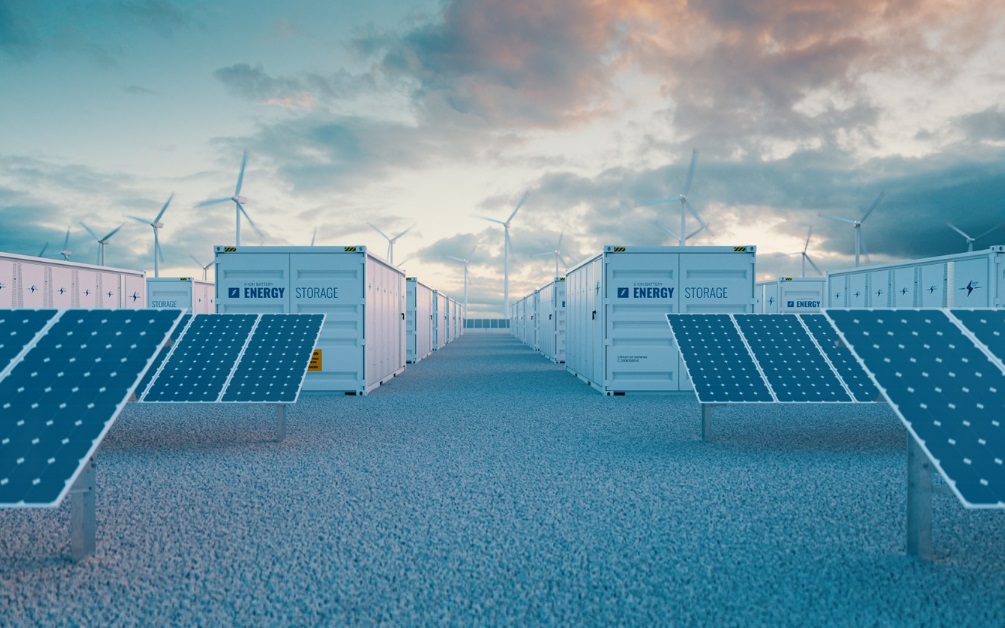New Energy Outlook: What 2025 Holds for Solar, Wind, Storage, Grid Infrastructure and Biofuels

Executive Summary
FFI Solutions has released its comprehensive Global New Energy Technologies Outlook 2025, authored by Drew Haluska, CFA, Senior Energy Transition Analyst. This essential report provides institutional investors and energy sector stakeholders with critical insights into the evolving clean energy landscape.
The energy transformation continues apace globally, deploying meaningful capital across many sectors. As the analysis reveals, 2025 will be a pivotal year for renewable energy technologies, battery storage, grid modernization, and sustainable fuels. For investors, understanding these trends isn’t just about keeping up with market shifts—it’s about positioning for the long-term structural changes reshaping how the world generates, stores, and distributes energy.
A Record-Breaking Outlook
The numbers tell a compelling story. Global renewable capacity is set to continue with robust growth in 2025, with forecasts pointing to more than 500 GW of new solar installations, 130 GW of new wind capacity, and over 50 GW of new battery storage. Add to this more than $400 billion in grid infrastructure investments and over 800 million barrel-of-oil-equivalents of biofuel production, and the scale of transformation becomes clear.
This transformation isn’t just about capacity additions—it’s about the ongoing shifts in the economics and nature of energy. Solar module prices have fallen 15% year-over-year to reach record lows of $0.29/W for utility-scale projects, making renewables increasingly competitive with or cheaper than fossil fuels in many markets. Meanwhile, wind turbine technology advances are delivering greater efficiency, with the latest offshore units significantly reducing installation costs per megawatt.
Read the Full Whitepaper
Download the complete report to access in-depth market forecasts, regional breakdowns, technology assessments, and strategic investment insights.
Regional Leadership and Market Dynamics
China continues dominating global renewable deployment, controlling 80% of solar panel production and expected to install 250 GW of new solar capacity in 2025. Massive ultra-high-voltage transmission investments ensure efficient power distribution from western solar hubs to eastern demand centers.
The United States faces policy uncertainty while maintaining strong fundamentals, projecting 26 GW of new solar and 18 GW of battery storage. Domestic manufacturing capacity expansion toward 51.7 GW by year-end 2025 positions the U.S. as the third-largest global producer.
Europe pursues energy security through renewables, targeting 70 GW of new solar and 17 GW of wind capacity alongside $100+ billion in grid modernization. Cross-border interconnectors and smart grids balance renewable penetration with stability.
Technology Breakthroughs Reshaping Markets
Solar technology continues advancing with tandem perovskite-silicon cells achieving 28.6% efficiency in commercially viable applications. Solar tracker integration, now standard for utility-scale installations, increases energy yields by 15-30%. Manufacturing innovations are simultaneously driving down costs and improving performance.
Wind power is scaling rapidly with offshore turbines exceeding 18 MW capacity, significantly reducing installation costs per megawatt. Floating wind technology enables deployment in deeper waters, while advanced blade recycling addresses sustainability concerns with improved composite materials.
Battery storage represents the most dynamic sector, with alternatives to lithium-ion gaining traction. Sodium-ion batteries offer cost advantages and abundant raw materials for grid applications. Vanadium redox flow batteries (VRFBs) provide scalability and longevity for large-scale storage, storing energy in liquid form for independent power and capacity scaling.
Grid Modernization: The Critical Foundation
The $400+ billion in global grid investments projected for 2025 reflects urgent needs to accommodate decentralized renewables and electrification. High-Voltage Direct Current (HVDC) transmission systems enable efficient long-distance renewable energy transport, with European specialists like Prysmian, Nexans, and NKT leading development.
Flexible AC Transmission Systems (FACTS) enhance voltage regulation and grid stability through dynamic power flow management—essential for variable renewable integration. Grid-forming inverters mimic synchronous generator behavior, providing stability in low-inertia grids crucial for microgrids and offshore wind farms.
“The energy transformation presents significant opportunities for investors in infrastructure development, manufacturing capacity, and technological innovation. Long-term growth trajectories remain firmly positive across all sectors, with battery storage and grid infrastructure, and sustainable aviation fuel (SAF), offering particularly compelling risk-return profiles”
Investment Landscape and Market Drivers
Corporate procurement continues driving renewable adoption, with Amazon surpassing 33 GW in power purchase agreements and technology giants securing massive long-term contracts. This corporate demand provides crucial revenue certainty facilitating project financing.
The sustainable aviation fuel (SAF) sector represents a critical growth opportunity for hard-to-electrify transportation. While currently less than 0.1% of aviation fuel consumption, companies like Neste, Shell, and TotalEnergies are scaling rapidly, with Shell targeting 2 million tonnes annually by 2025.
Key investment opportunities include battery storage infrastructure, grid modernization technologies, sustainable fuel production, and advanced transmission systems. However, investors must navigate supply chain volatility, policy uncertainty, and infrastructure bottlenecks.
The Road Ahead
The analysis reveals that the energy transition represents a multi-decade restructuring of the global economy’s power infrastructure. While momentum is strong across all sectors, transformation will be uneven and require sustained investment over decades.
For institutional investors, renewable energy projects offer stable, long-term cash flows, while emerging technologies supporting wider clean energy adoption present opportunities for accelerated impact. The integration challenge—connecting renewable generation with demand through modernized grids—represents perhaps the greatest investment opportunity.
The convergence of falling technology costs, robust policy support, and rising corporate procurement creates compelling opportunities across the clean energy value chain. Understanding regional dynamics, technological innovations, and market drivers will be essential for investment success in this rapidly evolving landscape.
